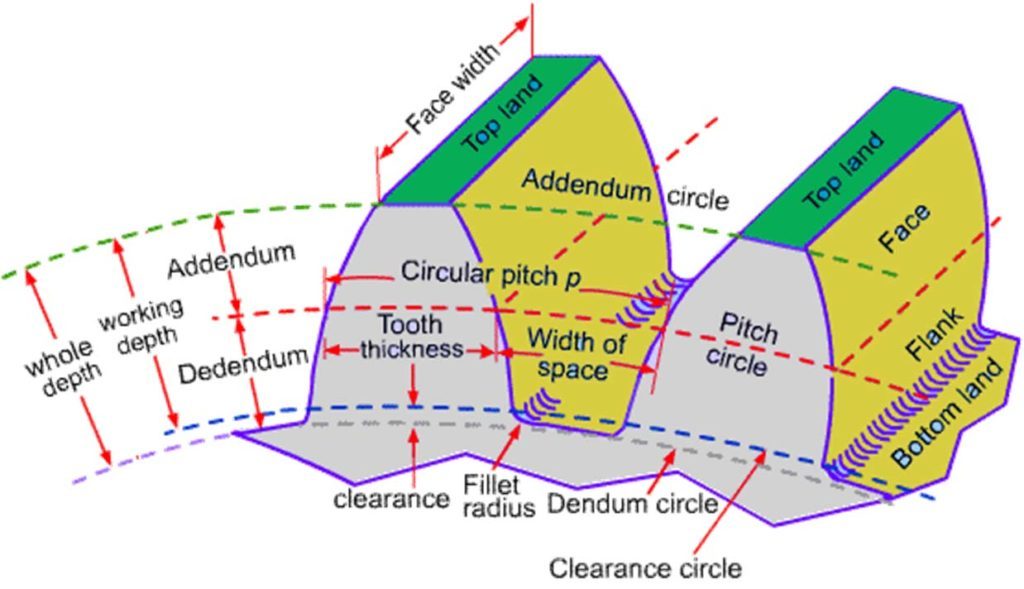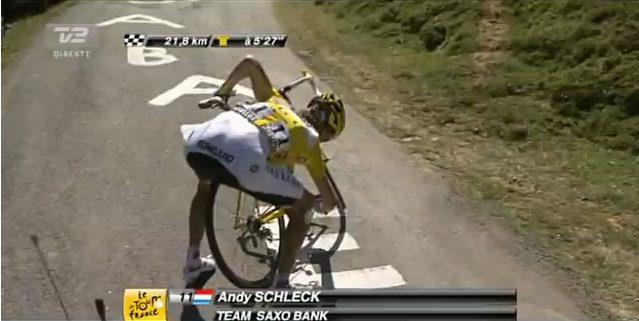This is why 1x doesn’t work on road bikes (yet)
AquaBlue made headlines last year for their novel 3T bikes with disc brakes (gasp) and 1x drivetrain (double-gasp) but as their season has progressed the riders, mechanics and owner have become increasingly frustrated with the bikes’ problems resulting in the team owner tweeting this:

Clearly 1x drivetrains are the not the future that 3T envisioned so 3T released a version of this frame designed for 2x drivetrains yesterday. In the longstanding cycling tradition of making your company sound Italian it’s been named the DUE (Italian for “two”) but for the poor riders on AquaBlue it would have been better named the overDUE.
So how come mountain bikes and cyclocross bikes have been using 1x drivetrains for years and years without issue?
This is why 1x doesn’t work on road bikes:
Chainstay length
The chainstays on a modern mountain or cyclocross bike are about 10% (30-40mm) longer than a road bike and despite the mountain bike hub being slightly wider this will make a significant difference. Chainline on these bikes is poor: on my CX or mountain bike (which have similar length chainstays) I can’t backpedal in the top 3 or 4 cogs without the chain dropping down the cassette. The shorter chainstays of a road bike make this even worse.
Tooth Geometry
The tooth geometry on a larger chainring also needs to be different to have a similar level of retention – the chainrings diameter affects how easily a tooth will ‘find’ the chain as it is rotated into it. For any given bottom flank width, the top flank will need to be narrower on a larger diameter chainring, thus reducing its ability to hold the chain and increasing its wear.

Constant Fettling with the Bikes
AquaBlue mechanics need to swap chainrings and cassettes for different races and stages to get the gear ratios needed by the riders, and each chainring or cassette swap will also require a chain swap because of the 1x drivetrains reliance on correct chain length. By working on the bikes more, they are introducing the risk of error and failure: chainring bolts coming loose or breaking, the wrong chain length fitted, etc. Mechanics are overworked humans and the more opportunity for errors you give them the more errors that will occur. This is why Di2 is prevalent in the WorldTour: It’s fit and forget and if the gears need to be tuned it’s because the hanger is bent, not due to any number of cable or housing wear issues.
Clutch tension
I don’t know how much clutch tension AquaBlue are using but the clutch tension adds a small amount of drag which the riders might be trying to avoid by having lower tension. You can feel this extra resistance by back-pedalling a bike in the workstand…it’s only a watt or two but when you’re racing for 3 weeks straight every watt is important. Remember how much effort these guys go to eliminate a watt of aero drag!
Freehub body drag
The drag of the freehub body also plays a huge part. Imagine the worst case: the freehub body is fixed and continues to push the chain as the wheel rotates. All freehub bodies have drag, some worse than others, and this drag is magnified as the speeds increase which makes it more of an issue for road bikes than mountain bikes or CX bikes.
For example, prior to the road-specific R45 which has less engagement points to reduce drag, a Chris King hub would make the chain go slack on a road bike. Here’s a demonstration where I’ve packed a Dial hub full of super thick grease to increase the freehub body drag:
My guess is the AquaBlue mechanics have stripped out every seal inside the 3T wheels and are running the freehub bodies on sewing machine oil to reduce freehub drag. A short attack at high speed followed by stopping pedaling – something frequent in road racing – will be a worst-case for making the chain go slack and thus derailing from the chainring.
Think freehub body drag isn’t a thing to worry about? Tyler Hamilton crashed heavily in the 2003 Tour de France after his mechanic removed half of the pawls in his rear hub to reduce drag while coasting. The hub failed to engage when Hamilton pedaled and spat him into a broken collarbone. In more recent times Syndicate mechanics are using a battery drill to run-in the bearings and seals of their sponsored King hubs to allow the hubs to coast faster. In a downhill race where about 80%* is spent coasting this makes a massive difference.
*According to Bryn Dickerson – but what does he know?
Mix and Match
Finally AquaBlue are running an off-brand cassette with a tiny 9t smallest cog. The SRAM derailleur isn’t designed for this so it might be struggling to get the guide pulley close enough to the cassette (no more slant parallelograms, remember) and the smaller cog will further increase the freehub body drag element.
Finally – these guys aren’t weekend warrior punters (sorry but that’s me, and probably you ) and are pushing this stuff way harder over way more kms than what anyone with a job can do. Similar failures aren’t uncommon in the WorldTour – look at Cav with his FSA chainrings or SRAM hydro rim brakes (“I don’t want to use this fucking bike! What the fuck is wrong this bike!”) , or the team who was sponsored by FSA but bought Shimano for the whole two seasons (dammit – what team was this?!?) Remember that time Andy Schleck dropped his chain (for the millionth time) and Contador attacked and went on to win the Tour de France? Despite what the marketing department tells you, the pros get lumped with crappy stuff from time to time because professional cycling is a business and not a hobby.

The humble front derailleur, cause of Andy loosing the Tour de France, isn’t dead yet.
Tristan

INTERESTING article, thank you 🙂
Interesting piece but…you are aware that 3T actually is an Italian company, headquartered in Brembate (BG)?
Interesting – Last time I had anything to do with 3T they were operating out of Ireland.